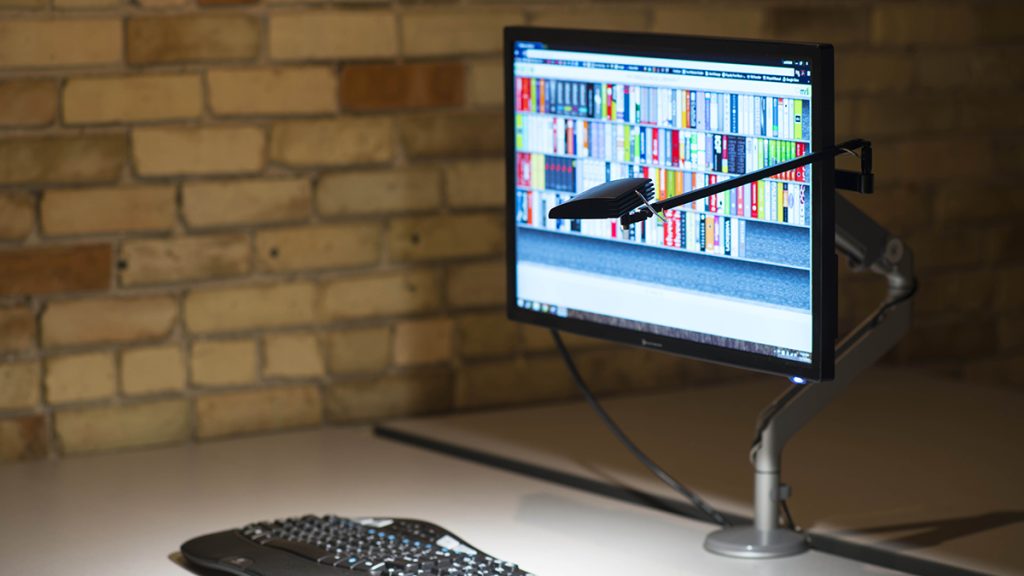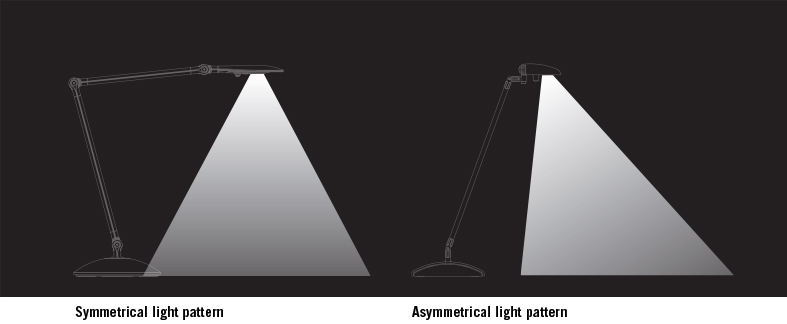When developing a comprehensive lighting plan, it’s easy to overlook the role of task lighting. Task lighting varies from ambient (general office) lighting in that it provides the necessary, focused light for a particular task, such as reading, computing, and note-taking.
One important factor to consider when determining the appropriate level of task lighting is the amount of contrast existing between the task light and the surrounding ambient lighting. If there’s a wide gap in intensity, one’s eyes must continually adjust and re-adjust, which can eventually lead to strain and fatigue. Research indicates that for every 1% loss in contrast, 15% greater light is needed to maintain the same level of visibility. For this reason, it’s important to make an informed decision about the kind of task lighting that best suits your space and how it may best support the people who will use it. This is where choosing between symmetrical and asymmetrical task lighting comes in.
What is the difference?
Asymmetrical lighting relies on an advanced computer-optimized reflector system to direct light laterally from the head of the light fixture across the work area. It has several advantages:
- There’s no direct eye contact with the light source; light is distributed evenly over the work area,
- There’s a healthy level of contrast in light between the workstation and the surrounding work area, and finally,
- Any created shadows are often less obtrusive.
Asymmetrical light is ideally suited for work areas where monitors are in use since the light can be directed away from the screen and toward the work surface.
Unlike asymmetrical lighting which concentrates light in one direction, symmetrical task lighting spreads light equally in all directions. Because symmetrical lighting tends to utilize higher footcandles (amount of surface light) in smaller spaces, it is ideal for inspection and visual tasks in which there is just a slight contrast between an object and its surroundings.
Which is right for you?
In many ways, specifying the correct type of task lighting comes down to the nature of the task at hand and the environment in which it is performed. When deciding if asymmetrical or symmetrical lighting would be right for an area, consider the answers to these questions:
- What is the amount of contrast between the workstation and the general workplace?
- What is the nature of the work being performed (ex. computing vs. inspection)?
- What are the approximate ages of the occupants? (A 40-year-old may need up to twice as much light as a 20-year-old).
Answering these and other questions can help you determine if symmetrical or asymmetrical task lighting is ideal for your workspace.
LightCorp has both symmetrical and asymmetrical task light options to consider. Our asymmetrical Tino LED is small, but mighty — projecting up to 103 footcandles a full foot forward from its base and even has a space-saving monitor mounting option. For symmetrical light options, check out our Revo and Voyage LED fixtures, both of which provide evenly dispersed illumination to the work surface and are both available in single and double arm options. For more information, please visit Lightcorp.com.


